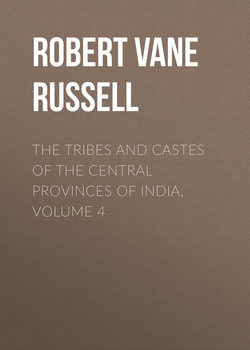Читать книгу The Tribes and Castes of the Central Provinces of India, Volume 4 - Robert Vane Russell - Страница 17
Part II
Articles on Castes and Tribes
Kumhār—Yemkala
Vol. IV
Kunbi
4. The cultivating status
ОглавлениеIt appears then that a Kunbi has in the past been synonymous with a cultivator, and that large groups from other castes have taken to agriculture, have been admitted into the community and usually obtained a rise in rank. In many villages Kunbis are the only ryots, while below them are the village menials and artisans, several of whom perform functions at weddings or on other occasions denoting their recognition of the Kunbi as their master or employer; and beneath these again are the impure Mahārs or labourers. Thus at a Kunbi betrothal the services of the barber and washerman must be requisitioned; the barber washes the feet of the boy and girl and places vermilion on the foreheads of the guests. The washerman spreads a sheet on the ground on which the boy and girl sit. At the end of the ceremony the barber and washerman take the bride and bridegroom on their shoulders and dance to music in the marriage-shed; for this they receive small presents. After a death has occurred at a Kunbi’s house the impurity is not removed until the barber and washerman have eaten in it. At a Kunbi’s wedding the Gurao or village priest brings the leafy branches of five trees, the mango, jāmun24 umar25 and two others and deposits them at Māroti’s temple, whence they are removed by the parents of the bride. Before a wedding again a Kunbi bride must go to the potter’s house and be seated on his wheel while it is turned round seven times for good luck. At seed-time and harvest all the village menials go to the cultivator’s field and present him with a specimen of their wares or make obeisance to him, receiving in return a small present of grain. This state of things seems to represent the primitive form of Hindu society from which the present widely ramified system, of castes may have expanded, and even now the outlines of the original structure may be discernible under all subsequent accretions.
24
Eugenia jambolana.
25
Ficus glomerata.
